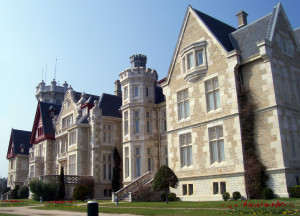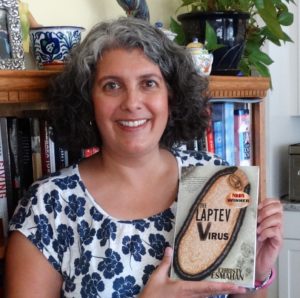Have you ever heard a person whose native language is Spanish and who is still working on their English get mixed up when pronouncing words? Maybe they say “sheep” when they mean “ship”, “beach” when referring to a female dog, or “sheet” when they mean…you get it. Well, the same goes when English speaking people are trying to converse in Spanish and just a small change in a word can give it a completely different meaning. My post today is about when that happened to me, creating one of the most embarrassing moments of my life. But before I share this experience, I need to set up the scene from several different angles.
First, anyone who has studied Spanish knows that there are a lot of words that are similar to English ones. So, if you want to say “excursion” in Spanish, you just change the accent of the English word a bit, and say “excursión.” Similarly, “radiator” is “radiador,” and “theater” is “teatro.” And so it is for many other words, though it didn’t work that way for the word I chose (and I still blush as I remember the scene.) Nevertheless, I will be brave and write about it for the whole world to laugh at, I mean, with, me. But I still need to set it up a bit more.
Second, you may know that in Spanish, objects are either masculine or feminine. So, if, for example, in English you say “look at it” (meaning, look at the moon), in Spanish you would say “look at her”. Or if you are looking for a book, which is masculine, instead of looking for it, you are looking for him. Okay, you get the picture.
The third part of the set-up is situational. I was a graduate student in the small city of León, which is northwest of Madrid, maybe two hours away by car. I was practically the only foreigner in the city at the time (that was 1986—now there are lots of foreigners there), and I had received a Rotary International Foundation Scholarship to study my first year of graduate school. One of the scholarship requirements was that I make contact with a local Rotarian, who would be my counselor, answering any questions about Spain and helping me make the adjustment to the different style of life. Since there were no Rotarians in León, I was told that I had to go to Valladolid, about an hour away by train, to meet with him there. So I called and set up an appointment to meet with this counselor person, and on the weekend I went with a couple of my friends (I wasn’t very brave) and when we got to his apartment, the Rotarian was not in. The housekeeper suggested we go to a café close by to look for him there, but he wasn’t there either. The waiters knew him and said that he had gone on to a restaurant, so we decided to follow him there, but still no luck. So, a nice trip to see a new city, but no Rotarian. And now for the embarrassing story.
It’s Monday afternoon, I’m sitting in the university cafeteria with a big group of graduate students, many of whom I don’t know well yet, and they’re all speaking in their super fast Spanish and I’m smiling and mostly tuning them out because I don’t understand them. Then one of them, a really nice guy with whom I’m still friends today, but who loves to kid around, says to me, “So, Christy, what did you do this weekend?”
Suddenly my heart is pounding in my ears as all eyes focus on me, and the part of my brain that has been acquiring a lot of Spanish freezes up. “I…I went to Valladolid.” Good, Christy. Five years of middle and high school Spanish, and a year of Spanish Literature and Spanish Conversational class in college paid off. I could answer a simple question in Spanish. Yeah.
“And, did you enjoy it? Did you see any sites?” He pursued, speaking slowly so I could understand.
“Yes,” I answered, willing myself to be courageous and expand the thought. “Actually, I was looking for my…” I hesitated. How in the world do you say “counselor” in Spanish? Everyone leaned a bit forward.
“Your…?” He prompted.
I decided to hazard a guess. How far off could I be, right? “Mi consolador” I answered. There. Not so bad. I was sure they’d be able to figure out what I meant.
But when I said that word, pretty much every single person at the table started turning pink. Okay, that was strange.
“Tu consolador?” he repeated, a smile playing on the edge of his lips.
“Yes,” I answered in Spanish, noticing people now covering their mouths in an attempt to hold back giggles. And everyone, all ten of them, were leaning in closer to the large, circular table to listen to me.
“Y donde lo has buscado?” Where have you looked for him? He persisted. He really is a funny guy, but at the time I did not appreciate how far out on a limb he was going.
“Por todas partes” I answered. Everywhere.
I was sure that I was understanding the questions and making myself understood, but I also knew that somehow I was putting my foot in my mouth, as the blushes intensified and many of the boys started giggling louder. Since when had looking for a counselor been so hilarious?
“¿Y fuístes a Valladolid a buscarlo?” He asked. And you went to Valladolid to find him?
“Yes, and I went all over, but he was nowhere,” I answered in good Spanish. By this time I noticed that one of my closest friends was gently shaking her head at me. No, she was saying silently. Just stop right there. I stared at her and she surreptitiously shook her head again, to make sure I got the message. I was thoroughly baffled.
“Christy,” she now announced aloud, “how about another cup of coffee?” And rising, she walked over and took me by the wrist to pull me away from the table while everyone else laughed harder and harder.
When we got out of earshot she whispered, you must mean “consejero” not “consolador.” You weren’t looking for your vibrator!
If you enjoyed this blog post, you might also like my series of novels, Bueno, Sinco and Brujas, which takes place in Santander, Spain.


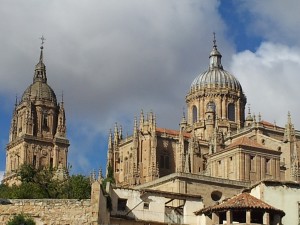
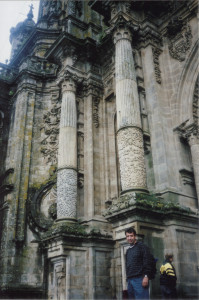
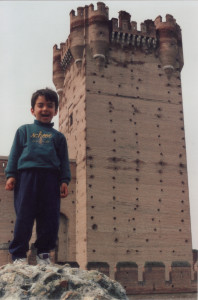
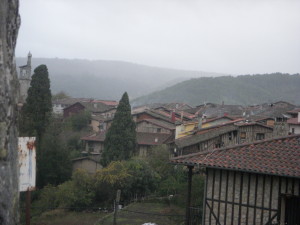
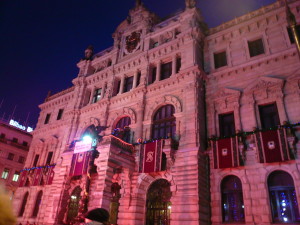
![Capricho_gaudi[1]](https://christyesmahan.com/wp-content/uploads/2013/08/Capricho_gaudi1-300x225.jpg)
![Photo_062310_001[1]](https://christyesmahan.com/wp-content/uploads/2013/08/Photo_062310_0011-300x240.jpg)
![l[1]](https://christyesmahan.com/wp-content/uploads/2013/08/l1.jpg)
